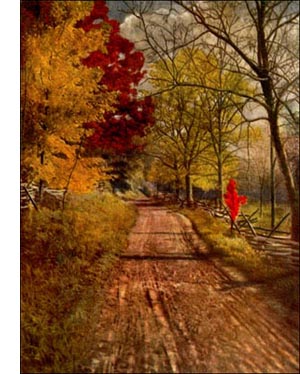American White Birch or Aspen Leaved Birch Tree
 American White Birch, Aspen-leaved Birch (Betula populifolia, Marsh.) -Small, short-lived tree, 25 to 40 feet high, with slender horizontal branches and tremulous foliage. Bark chalky white or greyish, with triangular dark patches where branches are or have been; not easily separated into layers; white does not rub off on clothing; branches dark brown. Wood light, soft, weak, close grained, not durable in contact with soil; light brown; takes good polish. Buds slender, brown, 1/4 inch long. Leaves alternate, simple, triangular, 2 to 3 inches long, long pointed, double saw toothed; dark green above, paler beneath, yellow in autumn; teeth of margin glandular; petioles long, slim, twisted. Flowers before leaves, April, monoecious; staminate in terminal catkins, single, or paired, formed in previous summer; pistillate catkins, z inch long, pale green, scales ovate. Fruits cylindrical cones, 1 inch long, blunt at both ends, drooping; scales downy, 3-lobed, side lobes large, spreading; nut oval, pointed, with broad wing. Preferred habitat, dry, gravelly soils, or borders of swamps. Distribution, Nova Scotia along coast to Delaware; northwest to Lake Ontario. Uses: Graceful and hardy ornamental tree; thrives in any soil, but rarely planted. Wood used for spools, shoe pegs, wood pulp and fuel. Valuable nurse trees to hardwoods and conifers on land Nature is reforesting.
American White Birch, Aspen-leaved Birch (Betula populifolia, Marsh.) -Small, short-lived tree, 25 to 40 feet high, with slender horizontal branches and tremulous foliage. Bark chalky white or greyish, with triangular dark patches where branches are or have been; not easily separated into layers; white does not rub off on clothing; branches dark brown. Wood light, soft, weak, close grained, not durable in contact with soil; light brown; takes good polish. Buds slender, brown, 1/4 inch long. Leaves alternate, simple, triangular, 2 to 3 inches long, long pointed, double saw toothed; dark green above, paler beneath, yellow in autumn; teeth of margin glandular; petioles long, slim, twisted. Flowers before leaves, April, monoecious; staminate in terminal catkins, single, or paired, formed in previous summer; pistillate catkins, z inch long, pale green, scales ovate. Fruits cylindrical cones, 1 inch long, blunt at both ends, drooping; scales downy, 3-lobed, side lobes large, spreading; nut oval, pointed, with broad wing. Preferred habitat, dry, gravelly soils, or borders of swamps. Distribution, Nova Scotia along coast to Delaware; northwest to Lake Ontario. Uses: Graceful and hardy ornamental tree; thrives in any soil, but rarely planted. Wood used for spools, shoe pegs, wood pulp and fuel. Valuable nurse trees to hardwoods and conifers on land Nature is reforesting.The only native species with which this white birch might be confused is the canoe birch. Look first at the bark. It is chalky white and yellowish beneath, but the chalk does not rub off. It is hard, close bark, which does not part into thin layers. It is cracked in growth, and the short crevices are dark, making the trunk look grey at a distance. Wherever a bud or branch has been, a large, ever-widening black V brands the trunk an,! limbs. Near the base of the trunk, the white bark is about all gone, leaving a black, furrowed area that grows gradually higher.
The foliage mass of the American white birch is much thinner and lighter than that of the canoe birch. The leaves are small and dainty, triangular, taper pointed, suggesting in shape and tremulous poise the aspens or poplars.
This is the one of our birches that most nearly resembles the European white birch. It is not a large tree, and the woodsman scorned it, until the manufacturer of wood pulp, shoe pegs and spools sent forth a demand for it. Now the owner looks with satisfaction upon the graceful, bending birches that bow to each other in the swamps along the streams, over abandoned fields and deforested mountain sides. The harvest is his in due season. This threatened doom of the white birch casts no warning shadow across these sunny, thick-set acres. The trees are all young together, and no matter how scant a living the sterile soil yields, these gypsy trees never seem to languish. Their silken ribbons of dirty white bark are flaunted gaily against the sombre background of evergreens, and they "lean out over the stream," as Doctor Van Dyke puts it, "Narcissus-like, as if to see their own beauty in the moving mirror." Life is short-but it is care free and joyous.
There is a philosophy in the lives of these vagabond birches we may well ponder upon. Do they not clothe with beauty the most uninviting places% Do they not come again, after a general slaughter, promptly and abundantly, from stump and from scattered seed? A noble persistence and patience under adverse conditions is revealed for our contemplation in the parable of the white birch.